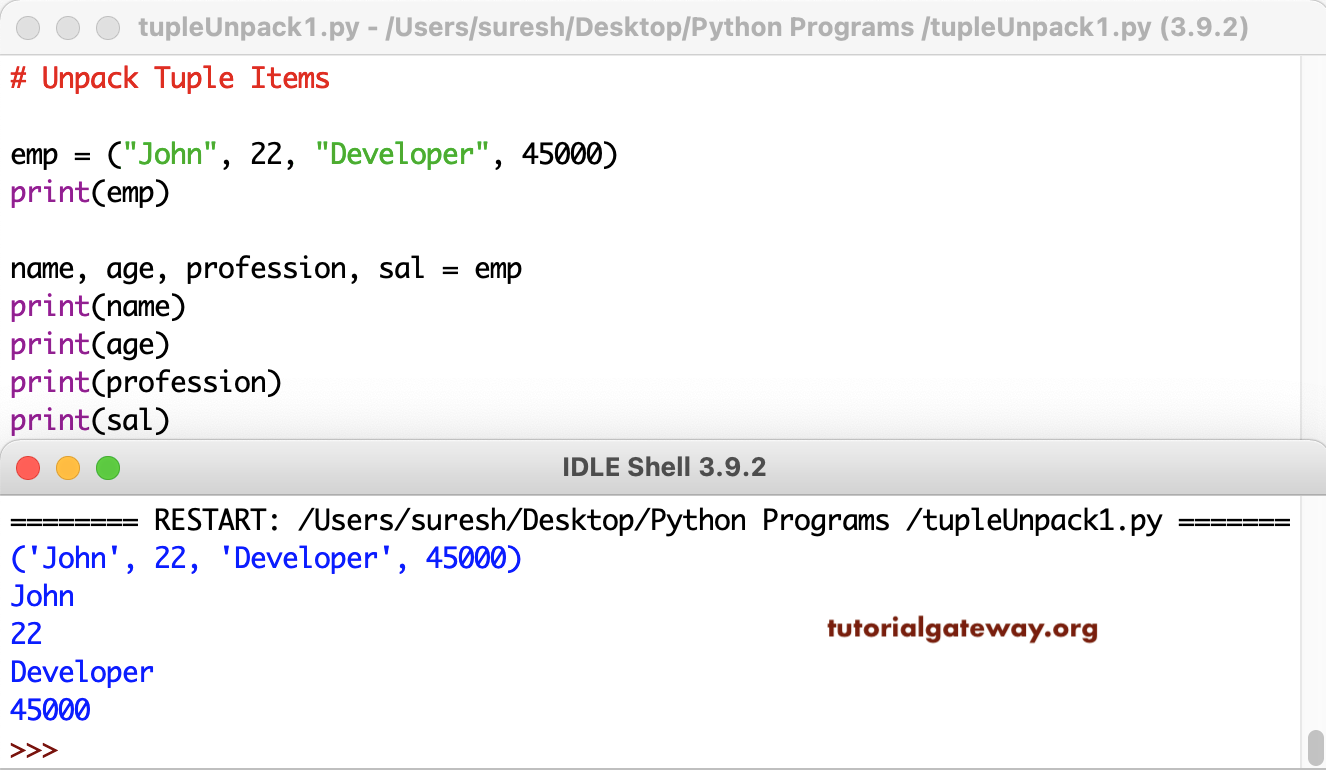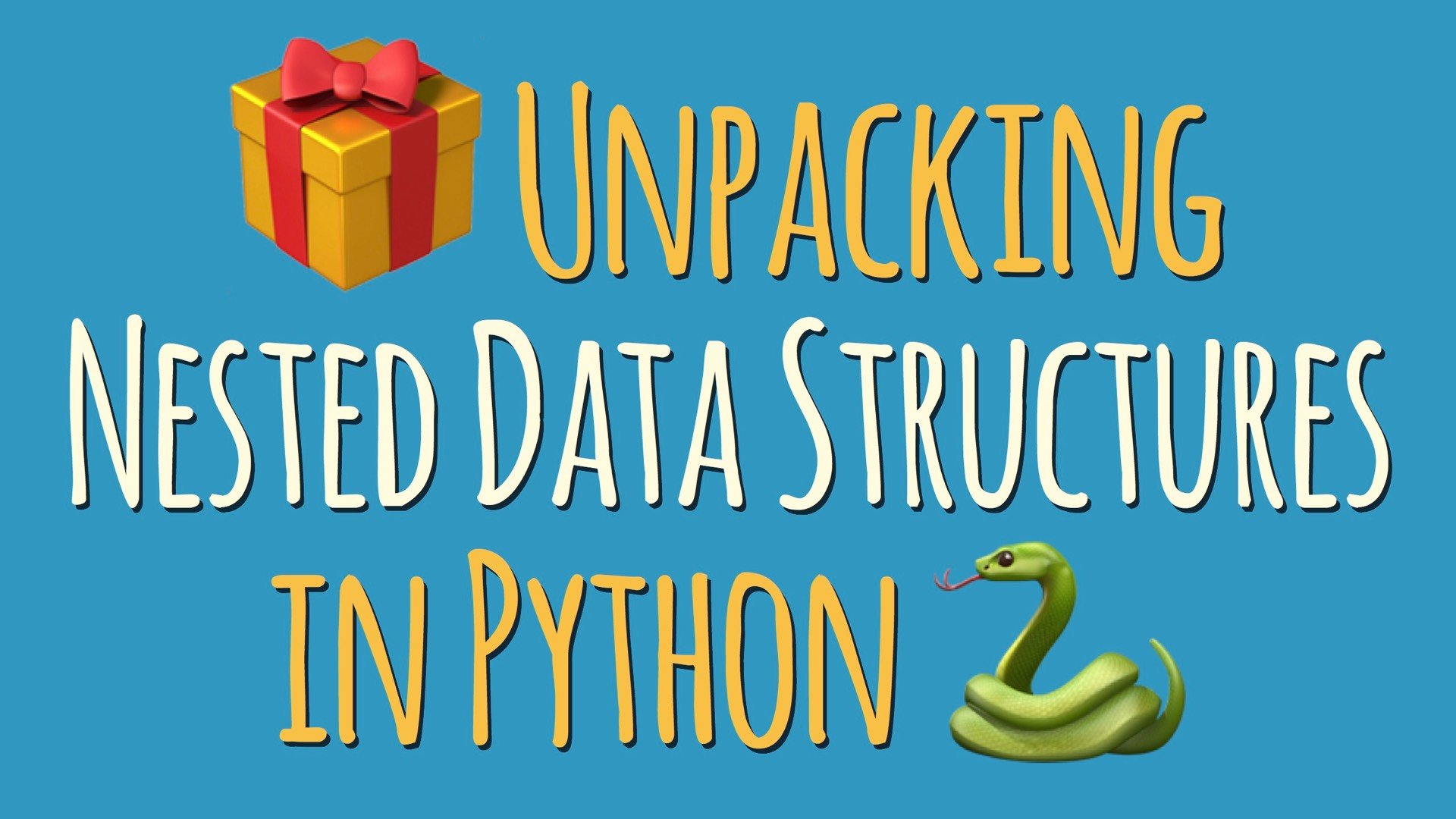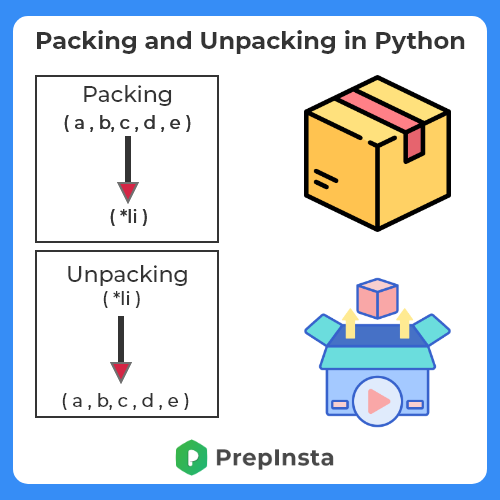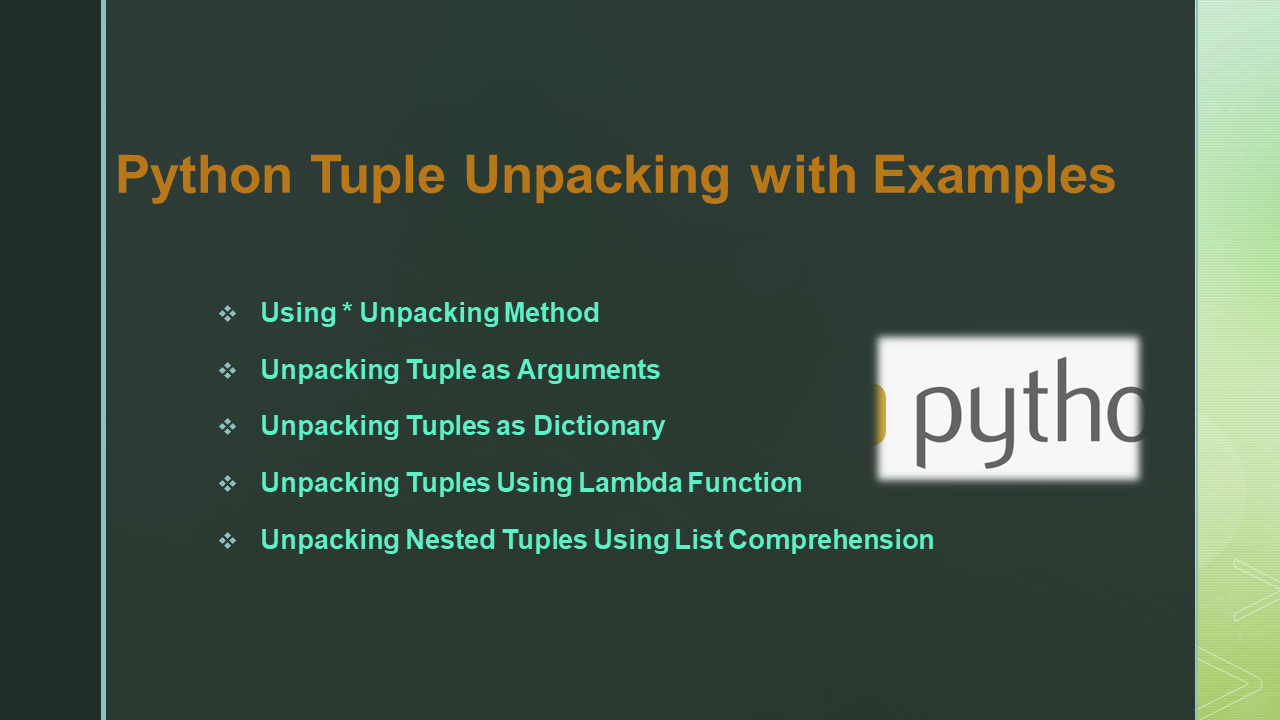
Unpacking of List and Tuple Python Tutorial12 YouTube
In Python, Tuple unpacking is a feature that allows us to assign values to multiple variables in a single statement. It works by unpacking a sequence (e.g., a tuple, list, or string) into individual variables.Unpacking is not limited to lists, you can also use it to unpack tuples, strings, and other iterable objects.Unpacking is a powerful feature in Python that can make your code more concise.

Unpacking Iterables in Python
For example, if we want to unpack num_list and pass in the 5 elements as separate arguments for the num_sum function, we could do so as follows: num_sum(*num_list) # 15. And that's it! The asterisk, *, or unpacking operator, unpacks num_list, and passes the values, or elements, of num_list as separate arguments to the num_sum function.

27. List Unpacking (Python VideoDarslari) YouTube
Introduction. Unpacking in Python refers to an operation that consists of assigning an iterable of values to a tuple (or list) of variables in a single assignment statement.As a complement, the term packing can be used when we collect several values in a single variable using the iterable unpacking operator, *.. Historically, Python developers have generically referred to this kind of.

Python Program to Unpack Tuple Items
Python Unpack a tuple and list in Python Modified: 2023-08-19 | Tags: Python, List In Python, you can assign elements of a tuple or list to multiple variables. It is called sequence unpacking. 5. Data Structures - Tuples and Sequences — Python 3.11.3 documentation Contents Basics of unpacking a tuple and a list Unpack a nested tuple and list
[Solved] Partial list unpack in Python 9to5Answer
How to unpack a list in Python? ⊕ Contents Python - Unpack a List In this tutorial, you will learn what unpacking a list means, and how to unpack a list into variables in Python. Unpack a list of five items to five variables What does unpacking a list means Let us first look into the situation where we need to unpack a list.

Python Beginner Tutorial Unpack Lists YouTube
So is there any way to unpack a list of list and get an output like: [1st list of variables], [2nd list of variables], [etc.] if i use itertools i get: l = list (chain (*a)) Out: [' [', '4', '1', '6', '2', '1', '3', '6'. that is not required So the working option is https://stackoverflow.com/a/46146432/8589220:

Unpacking With Asterisk Operators in Python YouTube
We can use * to unpack the list so that all elements of it can be passed as different parameters. Python3 def fun (a, b, c, d): print(a, b, c, d) my_list = [1, 2, 3, 4] fun (*my_list) Output : (1, 2, 3, 4) We need to keep in mind that the no. of arguments must be the same as the length of the list that we are unpacking for the arguments. Python3

Python How to Unpack List, Tuple or Dictionary to Function arguments using * and ** Python
How do I unpack a list of lists? Ask Question Asked 7 years, 7 months ago Modified 7 years, 7 months ago Viewed 5k times 4 In Python 3 I'm trying to unpack a list of lists: members = [ ['3', '5', '5', '20', 'D'], ['2', '2', '2', '30', 'C']] I want it to print in the format of 3 5 5 20 D 2 2 2 30 C

13 Python Tutorial for Beginners How to Pack and Unpack a Collection or List in Python YouTube
Method #3 : Using list comprehension: Initialize the original list, test_list. Print the original list. Use a list comprehension to create a new list that contains all the elements of test_list. Unpack the new list into individual variables named one, two, three, four, and five. Print the values of the variables.

Unpacking Nested Data Structures in Python
Python List Unpacking. List unpacking is the process of assigning k elements of a list to k different variables in a single line of code. In the following example, you unpack the three elements in the list [1, 2, 3] into variables a, b, and c. Each variable captures one list element after the unpacking operation.

Unpack Operator in Python tutorial Python Tricks YouTube
An in-depth guide to understanding the power and usage of unpacking in python. Understanding Unpacking in Python. Unpacking is a process where an iterable such as list, tuple or dictionary is broken down into individual components. This is commonly seen when passing arguments to functions or assigning values from a container to multiple.

Python To Unpack Tuple, List Or Dictionary CODE FORESTS
To unpack a list in Python, directly assign list elements to variables (e.g., a, b, c = [1, 2, 3]), use the asterisk operator for variable-length lists (e.g., first, rest = [1, 2, 3, 4]), iterate over lists with a for loop (for x in my_list:), and pass list elements as function arguments using the asterisk (e.g., my_function (my_list)).

Packing and Unpacking in Python PrepInsta Python
What is the Meaning of Unpacking a List in Python? List unpacking is the most common way of extracting individual items from a list and assigning them to other variables in Python, without removing them from the list itself. This smart solution improves access to list items while also making the code more logical and easier to read.

Python Unpack List ( Multiple Ways )
Different Types of Unpacking in Python: Unpacking list using 2 variables . Assigning the elements of a list to two separate variables is known as unpacking a list using two variables. This is also known as tuple unpacking, because the elements of the list are unpacked into a tuple. For Example:

Python Tuple Unpacking with Examples Spark By {Examples}
Python Unpack List: Python, a language revered for its simplicity yet powerful capabilities, introduces the concept of unpacking to further enhance data handling. Unpacking in Python allows for the assignment of variable names to elements within iterables, making data manipulation intuitive and clean. This practice not only makes code more.

Python tip You can unpack list elements to variables. Как вывести значения листа в переменные ☝
It allows you to store list elements under separate named variables. In Python, you can unpack a list in the following ways. Use Variable Assignment to Unpack List. Assign the items of the list to separate variables by declaring them (comma separated) on the LHS of the = operator with a list on the RHS. The number of variables should be equal.